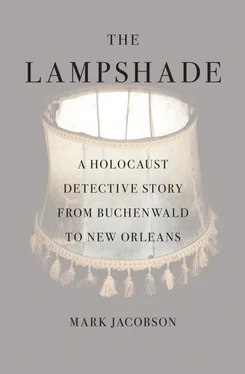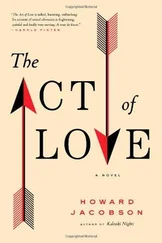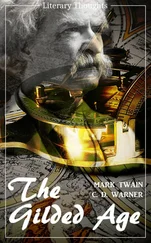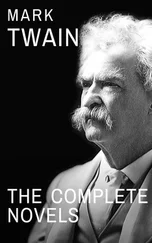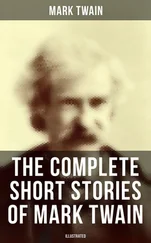This doesn’t mean the shade is not present. It makes a cameo appearance on one of the many video monitors set up around the USHMM, in the scenes of the Weimar residents filing past the Buchenwald Table. In one particular sequence, the photographer shoots from behind the Table, and the lampshade is visible through the crowd, dead center in the frame.
The lampshade dominates the image for a full three seconds. If you know what you are looking for, it pops right out at you. But chances are that, even though it is reasonable to assume that many of the USHMM’s daily visitors pause to watch the video, few of them are aware they are seeing the famous Buchenwald lampshade. The museum makes no mention of it, either in the footage commentary or with a written explanation. Without context, reduced to an undefined rhomboid shape on the screen, it becomes nearly invisible.
In the Queens schoolyard of the 1950s, decades before the museums and Schindler’s List, the lampshade was our Holocaust, the Shoah we knew. The lampshade and its succubus Bitch of Buchenwald enabler, Ilse Koch, were in the news every day, and deemed worthy of convening a special select committee of the United States Congress. Six decades later, having vanished from the Table at Buchenwald, missing at Nuremberg, never scientifically proven to be real, the lampshade had become an unmentionable ghost, a dybbuk, written out of the Holocaust.
“That is because it is a myth,” said Diane Saltzman, the former head of collections at USHMM.
I was about halfway through an increasingly contentious conversation with Ms. Saltzman about the lampshade’s disappearance from the neo-official version of the Holocaust narrative, and this was perhaps the tenth time she had used the word myth to describe the lampshade.
“Did you look at the DNA report?” I asked. At the request of the USHMM press guy, I’d sent the DNA report and several pictures of the lampshade to Washington.
“I did,” Ms. Saltzman replied. “It was interesting. But inconclusive. Completely inconclusive. It proves nothing .”
Ms. Saltzman apparently had me pegged for something of a nut or, even worse, a reflexively sensationalistic journalist looking to make National Enquirer —style headlines with yet another hoary story about Nazi monsters, always a hardy perennial. Only the week before, one of the supermarket rags had a story about a “Nazi vampire” appearing in a subdivision outside Fresno, California.
I could understand Saltzman’s trepidation. The lampshade had become the creaking flying saucer of the Holocaust, the domain of the huckster and the country bumpkin. People continued to find shades they imagined were made of human skin in attics or, as Skip Henderson did, at rummage sales. Positive of their authenticity, most of these people felt that these objects should be turned over to the Holocaust Museum. Many of these cases came across Diane Saltzman’s desk.
Typical was a 2004 incident in the small town of Lovingston, Virginia. As reported in the Charlottesville Daily Progress, a suspicious-looking lampshade had been found in the voluminous collection of seventy-seven-year-old antique dealer Daniel Avery. “I think it’s real because of what it looks like. It really looks like skin,” said Doris Jones, a local antique shop owner who noted Avery was always coming up with “unusual things. He’s very into snakes. He had snake rings, snake candlesticks.” For his part, Avery, reportedly very ill, said he didn’t want to part with the lampshade. He had a sentimental attachment to it since it was given to him by “my dear Mary,” a barmaid he’d run into at a local saloon forty years earlier and hadn’t seen since. It was Mary who told Avery the lampshade “was from human hide that came from the Germans.”
Reached by the Daily Progress, Diane Saltzman dismissed the possibility that the Lovingston lampshade was made in a concentration camp. “None of the lampshades that have surfaced over the past fifty years have turned out to be real,” she said. Daniel Avery disputed Saltzman’s assessment. “That’s what she thinks,” he said.
As far as she was concerned, Ms. Saltzman told me, the lampshade was “like the soap, which is also unproven.”
It would become a familiar refrain, this coupling of the lampshade with the story about how the Germans had engaged in the mass production of soap from Jewish bodies. Back in Queens, we all knew about the soap.
The “proof” supposedly came from many reported sightings of soap inscribed with the letters RJF, which was rumored to stand for Reichs Juden Fett, or “state Jewish fat.” Many believed the story, including famed Nazi hunter Simon Wiesenthal, who in 1946 wrote, “The General Government [Poland] knew quite well what the ‘RJF’ soap meant. The civilized world may not believe the joy with which the Nazis and their women in the General Government thought of this soap. In each piece of soap they saw a Jew who had been magically put there, and had thus been prevented from growing into a second Freud, Ehrlich or Einstein.” [11] According to Israeli author Tom Segev, who was completing a book about Wiesenthal when I spoke to him in Jerusalem, the famous Nazi hunter later changed his mind on the soap issue. “He came to the conclusion it wasn’t so,” Segev said.
The idea that people could be made into soap carried such a stigma that when the first camp survivors emigrated to Palestine in the late 1940s, the established Zionist settlers, not enthralled to see the peasant newcomers, derogatorily referred to them as sabon, or soap. Later, however, it was pointed out that RJF was actually RIF, initials for Reichsstelle für Industrielle Fettversorgung, or “National Center for Industrial Fat Provisioning.” From there the soap story began to fade into the realm of folklore, a tale quite possibly left over from World War I, when British propagandists accused the Germans of using dead soldiers to make products for the war effort.
As it turned out, the Nazis did at least experiment with turning corpses into soap. According to testimony at Nuremberg and much subsequent research, in 1944 Professor Rudolf Spanner, the SS doctor in charge of the Danzig Anatomical Institute, was given the assignment to test the feasibility of such soap manufacturing. Reportedly writing letters to local town mayors urging them not to bury the dead but rather send the corpses to the Danzig Institute, Spanner devised a recipe for the process calling for five kilos of human fat to each ten liters of water along with five hundred grams of caustic soda. With the war going badly, however, there was little time or money for soap production. “It never reached the industrial stage, nothing close to the degree many believed,” says Yehuda Bauer, preeminent Holocaust scholar at Yad Vashem.
It was exactly “distractions” like soap and lampshades that “created fodder” for the so-called Holocaust deniers, crazies for whom “no soap meant no Holocaust,” Diane Saltzman said. This seemed a reasonable concern. The Internet had only further enabled the loonies claiming the “faking” of the Holocaust was responsible for everything from the establishment of the State of Israel to continued Jewish control of the planet, from Goldman Sachs on down. These maniacs had to be resisted on every level.
Yet what did that have to do with the lampshade Skip Henderson bought in New Orleans, the one that according to the Bode lab DNA report was real?
“You haven’t presented enough evidence. This report is only one aspect of what must be done,” Saltzman said. I should have examined the age of the thread used to stitch the panels of the shade together. I should have attempted to get a better sense of the age of the metal on the frame itself. “We are talking about specifics,” she chided. “You don’t provide them.”
Читать дальше
